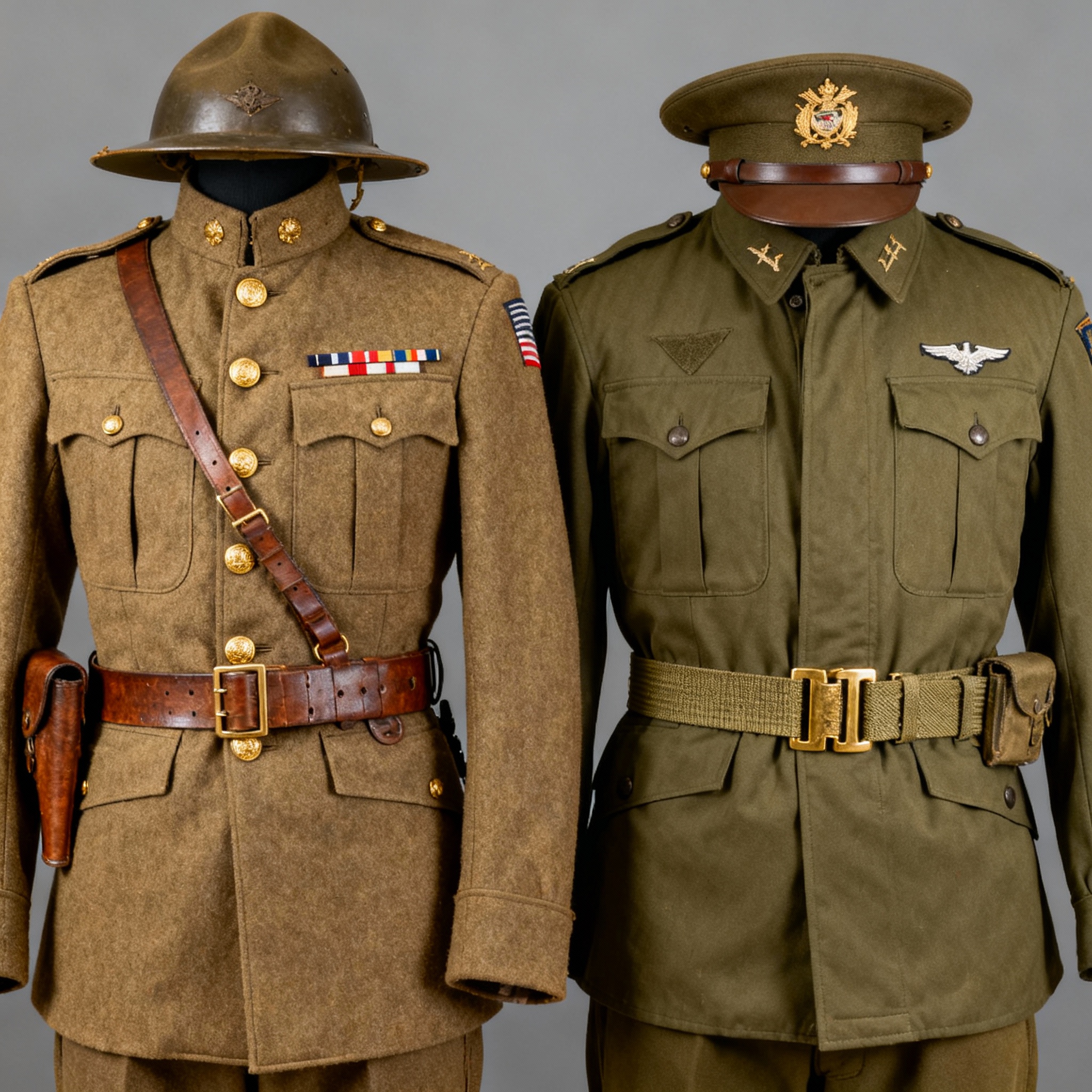
WW1 American Uniform: A Collector’s & Historian’s Guide | Korean War Uniforms & More
Published on Oct 04, 2025
WW1 American Uniform: A Collector’s & Historian’s Guide | Korean War Uniforms & More
Did you know that over 4.7 million Americans served in uniform during World War I?
Each soldier carried not just a rifle but also a symbol of evolving military fashion and function—the WW1 American uniform. Whether you're a history enthusiast, collector, or reenactor, understanding this attire helps you connect deeply with a pivotal moment in U.S. history.
In this article, we’ll dive into the details of the WW1 American uniform, discuss how it compares with Korean War uniforms, and explore where to find, assess, and preserve authentic or replica pieces. We'll also cover trends, mistakes to avoid, and expert recommendations for your journey into military gear collecting.
The Evolution of the WW1 American Uniform
The American army uniform during World War One was heavily influenced by British and French styles, adapted for practicality and mass production.
Key Components of the WW1 American Uniform:
- M1917 Helmet (a variation of the British Brodie helmet)
- Wool Service Coat (with brass buttons, standing collar)
- Wool Breeches
- Canvas Leggings (to keep mud out of boots)
- Field Gear like the M1910 haversack, canteen, and entrenching tool
Notable Differences from WW2 Gear:
- In WW1, the tunic featured a stand-up collar, while World War II American uniforms adopted the open-collar service coat.
- Khaki and olive drab were standard, but WW2 uniforms became more varied with theatre-specific adaptations.
Pro Tip: Original WW1 uniforms often have hand-stitched labels, while reproductions use machine stitching—check the inside seams for authenticity!
Why Compare WW1, the Korean War, and WW2 Uniforms?
Understanding how the WW1 American uniform influenced future designs provides context and clarity, especially when collecting or investing in pieces.
Key Differences Across Eras:
Feature WW1 Uniform Korean War Uniform, WW2 Uniform, Helmet | M1917 | M1 Helmet (refined) | M1 Helmet
Coat | Wool standing collar | M1951 field jacket | Ike jacket, M41/M43 field jackets
Footwear | Hobnail boots | Combat boots | Service shoes + gaiters
Common Color | Olive Drab | OG-107 | Olive Drab / Khaki
Related Keyword Insert: Collectors often compare Intents: Informational 50%, Commercial 50% us wwi uniform pieces with Intents: Informational 49%, Commercial 51% world war ii American uniforms for historical consistency and investment value.
Actionable Steps: How to Identify an Authentic WW1 American Uniform
Step 1: Know the Labels & Markings
- WW1 pieces usually include quartermaster stamps or "U.S." embossing.
- Authentic jackets often have unit or division patches sewn on by hand.
Step 2: Material & Fabric Check
- WW1 coats used heavy wool; modern reproductions may be thinner.
- Canvas gear from WW1 tends to be lighter khaki than later versions.
Step 3: Buy from Trusted Sources
- Seek established militaria dealers or auction houses.
- Use platforms like eBay only if the seller has solid reviews and offers returns.
Watch out! Many "WW1" listings are actually Korean War uniforms or modified WW2 versions. Study the stitching, button style, and material weight.
Common Pitfalls When Collecting WW1 and Korean War Uniforms
1. Mixing Uniform Eras
It's easy to mistake an American army uniform World War One piece for a later variant. Always cross-reference with historical photos or reference books.
2. Paying Too Much for Reproductions
Not all sellers disclose if an item is a repro. Learn the signs:
- Too-clean wool
- Plastic buttons
- Non-authentic insignia
3. Neglecting Proper Storage
Wool and canvas deteriorate quickly if stored improperly:
- Keep uniforms in acid-free garment bags
- Avoid damp or high-heat areas
- Use cedar blocks for pest control
Trends: What’s Hot in WW1 & WW2 Collectibles Today?
Increasing Interest in WW1 Collectibles
The 100th anniversary of WW1 reignited interest in the war’s gear. Collectors are now shifting from world war 2 uniforms back to WW1 for rarer finds.
Reenactment Community Growth
Enthusiasts of us WWI uniform pieces are expanding into full reenactments, driving demand for quality reproductions that mimic historical accuracy.
Digital Archives & AI Tools
Thanks to AI-driven archives and restoration, you can now match uniforms to historical photos, improving identification accuracy.
How Korean War Uniforms Compare for Collectors
Though not as widely collected as WW1 or WW2, Korean War uniforms are gaining traction due to their transitional design:
- Blend of old-school wool with modern materials
- Early Cold War vibe with updated M1 helmets and field jackets
- Generally cheaper than WW2 gear but rising in price
Keyword Usage: If you're searching for Intents: Informational 50%, Commercial 50% Korean War uniforms, now is a good time to collect before prices spike like those of world war ii American uniforms.
Final Tips for Beginners
If you’re just starting your collection or interest in military history, here’s what to do:
- Start small – look for basic pieces like the M1917 helmet or leggings.
- Use reference books – e.g., “U.S. Army Uniforms of World War I” by Shelby Stanton.
- Join forums – Militaria forums can help you verify items before buying.
- Consider replicas for reenactment – save originals for preservation.
Conclusion: Embrace the Legacy of the WW1 American Uniform and Beyond
The WW1 American uniform is more than clothing—it’s a story stitched in wool, canvas, and brass. Whether you're comparing it to Korean War uniforms or seeking pieces from the Intents: Informational 50%, Commercial 50% US WWI uniform category, each item is a key to understanding the soldier’s life.
Avoid common pitfalls, learn the signs of authenticity, and follow the growing trend in reenactment and collecting. Remember, whether you're exploring world war 2 uniforms or the lesser-known Intents: Informational 49%, Commercial 51%: World War II American uniforms – every thread matters.
